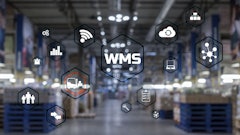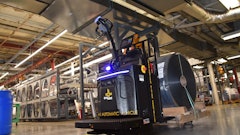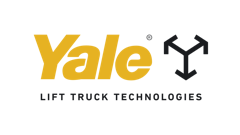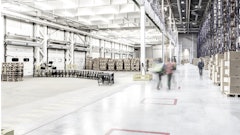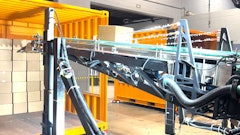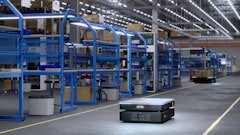
*This content is sponsored by SAP*
Throughout history, massive disruptions, such as pandemics, hurricanes, and wars have sent supply chain companies reeling without the slightest bit of warning. As a consequence, trading partners are now seeking ways to identify blind spots up and down their supply chains to gain flexibility in anticipation of the next big bombshell.
Supply & Demand Chain Executive addressed the issue at this year’s SCN Summit, in a webinar on Thursday, December 7, titled, “Mastering Supply Chain Visibility: From Chaos to Clarity,” featuring Brooke Williams, vice president, business network tiger team at SAP, and Marina Mayer, Supply & Demand Chain Executive editor-in-chief, supply chain network. The event revealed how businesses are transitioning from crisis management to recovery, making supply chain visibility a top priority.
“Having the ability to see what’s ahead and visualize any number of potential workarounds is critical to supply chain operators who want to be more proactive than reactive,” said, Mayer, who has covered the supply chain and logistics industry for over 13 years. “Factors such as weather, geopolitical events, changing regulations, and the economy can create waves of uncertainty that disrupt operations, making end-to-end visibility inside and outside the organization a top priority.”
Of course, having timely, relevant, high-quality data on hand is the key to establishing a 360° view of the landscape. Data is what feeds the decision-making process, and it can be a challenge to access, process, and analyze it with so much of it stored in internal and external siloes, systems, and databases up and down the supply chain – especially with so many companies relying on external partners to manufacture, assemble, package, and ship their products.
“This is where a business network can widen the aperture on what is happening now, by connecting suppliers, logistics, and equipment partners on a platform where sharing information is both secure and instantaneous,” said Williams. “A business network drives the speed of information exchange at a high-quality level, improving collaboration, creating real-time situational awareness, and ultimately lowering cost with optimum resilience.”
For companies still grappling with gaps across the supply chain, replacing manual systems with a digital approach can be unsettling. But as recent disruptions have proven, doing things the way they’ve always been done is not an answer.
IDC research shows that 87% of companies outsource at least part of their operations, meaning that data pockets exist virtually everywhere an enterprise conducts business around the globe. No wonder the same study reports that 61% of supply chain operators admit that they lack a 360° view of operations.
The way to overcome that reality is to take practical steps toward a more tenable solution. The first step would be to evaluate your current business process to determine what’s causing friction. Manual activities, disconnected data sources, outdated technology, and broken processes all contribute to the problem. Once you have a lay of the land, you can then start addressing trouble spots by order of priority, determining which areas can be fixed quickly and easily, but also where maximum value might be gained. Charting these in a heat map might provide a decision tree for transformation.
“Your main consideration should always be your customer first,” said Williams, whose specialties include ERP systems, multi-enterprise business networks, and supply chain solution architecture. “Anything that can help you serve your customer better, ensure that their expectations are met, and add value to their experience will point you in the right direction. From there, it’s just a matter of designing a digital journey that connects the dots to an optimum result.”
If you are currently reviewing your supply chain operations with an eye toward improving service, lowering cost, and creating better business resilience, view the “Mastering Supply Chain Visibility: From Chaos to Clarity” session on demand (part of the SCN Summit), or visit Supply & Demand Chain Executive to learn more.









